Experiment and Numerical Analysis of Thermal Performance of a Billboard External Receiver
Abstract
:1. Introduction
2. Experimental Setup
2.1. Solar Simulator and Heat Flux Test Setup
- (1)
- The electrical heating mode is unable to accurately map the absorption and the reflection of the light rays on the surface of the tubes, which is contrary to light-thermal conversion as in actual power plants.
- (2)
- The temperature at the surface is very high due to the absence of any cooling measures/insulation. The heat transfer heat to other surfaces, including supporting structure (and passive surface in cavity receivers) via radiation is neglected.
- (3)
- Heating through the electrical mode causes the temperature to be evenly distributed on the back surface of the tube. Whereas, in real power plants, only the front surface of the tubes is the recipient of the direct sunlight. The back surface of the tubes attached with the supporting structure results in heat transfer. Although it is very less, it cannot be considered as adiabatic, it still results in highly non-uniform temperature distribution.
2.2. Billboard Receiver: Design and Geometry
2.3. Solar Simulator and Heat Flux Measurement System
2.4. Thermal Efficiency of the Receiver
3. Incident Energy at the Receiver
4. Experimental Results and Discussion
4.1. Temperature Variations during the Start-Up Process
4.2. Thermal Efficiency Calculation at Steady State
5. Numerical Simulations
6. Results Comparison and Validation
- Complex heat transfer phenomenon in the experimental setup, which cannot be exactly replicated for the numerical simulations.
- Insulation of pipes and receiver support may not be as practically accurate and reasonable as in the numerical simulations.
- Possible presence of minor hairline cracks or gaps at the joints that may have resulted in leaking generated steam.
- Other obvious human and experimental errors that may have occurred such as equipment accuracy etc.
7. Conclusions
Author Contributions
Funding
Institutional Review Board Statement
Informed Consent Statement
Data Availability Statement
Acknowledgments
Conflicts of Interest
References
- Clausing, A.M. An analysis of convective losses from cavity solar central receivers. Sol. Energy 1981, 27, 295–300. [Google Scholar] [CrossRef]
- Clausing, A.M. Convective Losses from Cavity Solar Receivers—Comparisons between Analytical Predictions and Experimental Results. J. Sol. Energy Eng. 1983, 105, 29. [Google Scholar] [CrossRef]
- Koenig, A.A.; Marvin, M. Convection Heat Loss Sensitivity in Open Cavity Solar Receivers; DOE Contract No. EG77-C-04-3985; Department of Energy: Washington, DC, USA, 1981. [Google Scholar]
- Le Quere, P.; Penot, F.; Mirenayat, M. Experimental study of heat loss through natural convection from an isothermal cubic open cavity. In Proceedings of the DOE/SERI/SNLL Workshop on Convective Losses from Solar Receivers; Sandia National Labortories Report; Sandia National Labortories: Albuquerque, NM, USA, 1981; pp. 165–174. [Google Scholar]
- Harris, J.A.; Lenz, T.G. Thermal Performance of Solar Concentrator/Cavity Receiver Systems. Sol. Energy 1985, 34, 135–142. [Google Scholar] [CrossRef]
- Kraabel, J. An Experimental Investigation of the Natural Convection From A Side-Facing Cubical Cavity. In Proceedings of the ASME-JSME Thermal Engineering Conference Proceedings, Honolulu, Hawaii, 20–24 March 1983; American Society of Mechanical Engineers: New York, NY, USA; pp. 299–306. [Google Scholar]
- Siebers, D.L.; Kraabel, J.S. Estimating Convective Energy Losses from Solar Central Receivers; Sandia National Labs.: Livermore, CA, USA, 1984. [Google Scholar]
- McMordie, R.K. Convection Heat Loss from a Cavity Receiver. J. Sol. Energy Eng. 1984, 106, 98. [Google Scholar] [CrossRef]
- Stine, W.B. Cavity receiver convection heat loss. In Proceedings of the International Solar Energy Society. Solar World Congress, Kobe, Japan, 4–8 September 1989; Volume 1318. [Google Scholar]
- Balaji, C.; Venkateshan, S.P. Interaction of surface radiation with free- convection in a square cavity. Int. J. Heat Fluid Flow 1993, 14, 260–267. [Google Scholar] [CrossRef]
- Behnia, M.; Reizes, J.A.; Davis, G.D.V. Combined radiation and natural convection in a rectangular cavity with a transparent wall and containing a non-participating fluid. Int. J. Numer. Methods Fluids 1990, 10, 305–325. [Google Scholar] [CrossRef]
- Leibfried, U.; Ortjohann, J. Convective heat loss from upward and downward-facing cavity solar receivers: Measurements and calculations. J. Sol. Energy Eng. 1995, 117, 75–84. [Google Scholar] [CrossRef]
- Pavlovic, M.; Penot, F. Experiments in the mixed convection regime in an isothermal open cubic cavity. Exp. Therm. Fluid Sci. 1991, 4, 648–655. [Google Scholar] [CrossRef]
- Ma, R.Y. Wind Effects on Convective Heat Loss from a Cavity Receiver for a Parabolic Concentrating Solar Collector; Sandia National Labs.: Albuquerque, NM, USA; California State Polytechnic Univ.: Pomona, CA, USA, 1993; pp. 1–160. [Google Scholar]
- Radosevich, L.G. SAND87-8022; Final Report on the Power Production Phase of the 10 MWe Solar Thermal Central Receiver Pilot Plant. Sandia National Laboratories: Albuquerque, NM, USA, 1988.
- Bradshaw, R.W.; Dawson, D.B.; de La Rosa, W.; Gilbert, R.; Goods, S.H.; Hale, M.J.; Jacobs, P.; Jones, S.A.; Kolb, G.J.; Pacheco, J.E.; et al. NM 87185-0703; Final Test and Evaluation Results from the Solar Two Project; Energy Storage. US Department of Energy, Sandia National Laboratories: Albuquerque, NM, USA, 2002.
- Jin, Y.; Fang, J.; Wei, J.; Qaisrani, M.A.; Wang, X. Homogenization of solar flux distribution in a carbon aerosol entrapped cavity receiver. Energy 2019, 182, 21–36. [Google Scholar] [CrossRef]
- Hahm, T.; HSchmidt–Traub Le Mann, B. A Cone Concentrator for High-Temperature Solar Cavity-Receivers. Sol. Energy 1999, 65, 33–41. [Google Scholar] [CrossRef]
- Ramesh, N.; Venkateshan, S.P. Effect of Surface Radiation on Natural Convection in a Square Enclosure. J. Thermophys. Heat Transf. 2012, 13, 299–301. [Google Scholar] [CrossRef]
- Kribus, A. Future Directions in Solar Thermal Electricity Generation. Solar Thermal Electricity Generation; Colección Documentos CIEMAT: Madrid, Spain, 1999; pp. 251–285. [Google Scholar]
- Kaushika, N.D.; Reddy, K.S. Performance of a low cost solar paraboloidal dish steam generating system. Energy Convers. Manag. 2000, 41, 713–726. [Google Scholar] [CrossRef]
- Pacheco, J.E.; Reilly, H.E.; Kolb, G.J.; Tyner, C.E. Summary of the Solar Two Test and Evaluation ProgramSandia National Lab.(SNL-NM), Albuquerque, NM (United States); Sandia National Lab.(SNL-CA): Livermore, CA, USA, 2000. [Google Scholar]
- Paitoonsurikarn, S.; Taumoefolau, T.; Lovegrove, K. Investigation of Natural Convection Heat Loss from a Solar Concentrator Open Cavity Receiver at Varying Angle of Inclination. In Proceedings of the ASME 2003 International Solar Energy Conference, Kohala Coast, HI, USA, 15–18 March 2003; pp. 611–617. [Google Scholar]
- Paitoonsurikarn, S.; Taumoefolau, T.; Lovegrove, K. Estimation of convection loss from paraboloidal dish cavity receivers. In Proceedings of the 42nd Conference of the Australia and New Zealand Solar Energy Society (ANZSES), Perth, Australia, 30 November–3 December 2004; pp. 1–7. [Google Scholar]
- Paitoonsurikarn, S.; Lovegrove, K. Effect of paraboloidal dish structure on the wind near a cavity receiver. In Proceedings of the 44th Annual Conference of the Australian and New Zealand Solar Energy Society, Canberra, Australia, 13–15 September 2006. [Google Scholar]
- Paitoonsurikarn, S.; Lovegrove, K.; Hughes, G.; Pye, J. Numerical Investigation of Natural Convection Loss From Cavity Receivers in Solar Dish Applications. J. Sol. Energy Eng. 2011, 133, 021004. [Google Scholar] [CrossRef]
- Schmitz, M.; Schwarzbözl, P.; Buck, R.; Pitz-Paal, R. Assessment of the potential improvement due to multiple apertures in central receiver systems with secondary concentrators. Sol. Energy 2006, 80, 111–120. [Google Scholar] [CrossRef] [Green Version]
- Schwarzbözl, P.; Pitz-Paal, R.; Schmitz, M. Visual HFLCAL-A software tool for layout and optimisation of heliostat fields. In Proceedings of the SolarPACES 2009, Berlin, Germany, 15–18 September 2009. [Google Scholar]
- Muftuoglu, A.; Bilgen, E. Conjugate heat transfer in open Cavities with a discrete heater at its optimized position. Int. J. Heat Mass Transf. 2008, 51, 779–788. [Google Scholar] [CrossRef]
- Prakash, M.; Kedare, S.B.; Nayak, J.K. Investigations on heat losses from a solar cavity receiver. Solar Energy 2009, 83, 157–170. [Google Scholar] [CrossRef]
- Fang, J.B.; Wei, J.J.; Dong, X.W.; Wang, Y.S. Thermal performance simulation of a solar cavity receiver under windy conditions. Sol. Energy 2011, 85, 126–138. [Google Scholar] [CrossRef]
- Tu, N.; Wei, J.; Fang, J. Experimental and numerical study on the thermal performance of a water/steam cavity receiver. Energies 2013, 6, 1198–1216. [Google Scholar] [CrossRef] [Green Version]
- Tu, N.; Wei, J.; Fang, J. Numerical study on thermal performance of a solar cavity receiver with different depths. Appl. Therm. Eng. 2014, 72, 20–28. [Google Scholar] [CrossRef]
- Fang, J.B.; Tu, N.; Wei, J.J. Numerical investigation of start-up performance of a solar cavity receiver. Renew. Energy 2013, 53, 35–42. [Google Scholar] [CrossRef]
- Fang, J.; Tu, N.; Wei, J.; Fang, T.; Du, X. Numerical investigation of the tube layout effects on the heat losses of solar cavity receiver. J. Therm. Sci. Eng. 2017, 10, 132. [Google Scholar] [CrossRef]
- Flesch, R.; Stadler, H.; Uhlig, R.; Pitz-Paal, R. Numerical analysis of the influence of inclination angle and wind on the heat losses of cavity receivers for solar thermal power towers. Sol. Energy 2014, 110, 427–437. [Google Scholar] [CrossRef] [Green Version]
- Flesch, R.; Stadler, H.; Uhlig, R.; Hoffschmidt, B. On the influence of wind on cavity receivers for solar power towers: An experimental analysis. Appl. Therm. Eng. 2015, 87, 724–735. [Google Scholar] [CrossRef]
- Kim Jongkyu Kim Jin-soo Stein, W. Simplified heat loss model for central tower solar receiver. Sol. Energy 2015, 116, 314–322. [Google Scholar]
- Stoddard, M.C. Convective Loss Measurements at the 10 MW.SOLAR Thermal Central Receiver Pilot Plant; Sandi a National Labs.: Livermore, CA, USA, 1986. [Google Scholar]
- Qaisrani, M.A.; Ahmed, N.; Wang, Q. Working, Modeling and Applications of Molten Salt TES Systems. In Synergy Development in Renewables Assisted Multi-Carrier Systems; Springer: Cham, Switzerland, 2022; pp. 279–309. [Google Scholar]
- Qaisrani, M.A.; Wei, J.; Khan, L.A. Potential and transition of concentrated solar power: A case study of China. Sustain. Energy Technol. Assess. 2021, 44, 101052. [Google Scholar] [CrossRef]
- Rodríguez-Sánchez, M.R.; Soria-Verdugo, A.; Almendros-Ibáñez, J.A.; Acosta-Iborra, A.; Santana, D. Thermal design guidelines of solar power towers. Appl. Therm. Eng. 2014, 63, 428–438. [Google Scholar] [CrossRef]
- Rodriguez-Sanchez, M.R.; Sanchez-Gonzalez, A.; Santana, D. Revised receiver efficiency of molten-salt power towers. Renew. Sustain. Energy Rev. 2015, 52, 1331–1339. [Google Scholar] [CrossRef]
- Rodriguez-Sanchez, M.D.L.R.; Sanchez-Gonzalez, A.; Marugan-Cruz, C.; Santana, D. Flow patterns of external solar receivers. Sol. Energy 2015, 122, 940–953. [Google Scholar] [CrossRef]
- Qaisrani, M.A.; Wei, J.; Fang, J.; Jin, Y.; Wan, Z.; Khalid, M. Heat losses and thermal stresses of an external cylindrical water/steam solar tower receiver. Appl. Therm. Eng. 2019, 163, 114241. [Google Scholar] [CrossRef]
- Qaisrani, M.A.; Fang, J.; Jin, Y.; Wan, Z.; Tu, N.; Khalid, M.; Rahman, M.U.; Wei, J. Thermal losses evaluation of an external rectangular receiver in a windy environment. Sol. Energy 2019, 184, 281–291. [Google Scholar] [CrossRef]
- Du, M.; Zhou, R.; Zhao, J.; Ling, X.; Liu, C. Thermal characteristics of grid flat-plate heat receiver in a solar power-tower system. Appl. Therm. Eng. 2021, 190, 116797. [Google Scholar] [CrossRef]
- Jin, Y.; Fang, J.; Wei, J.; Qaisrani, M.A.; Wang, X. Thermal performance evaluation of a cavity receiver based on particle’s radiation properties during the day time. Renew. Energy 2019, 143, 622–636. [Google Scholar] [CrossRef]
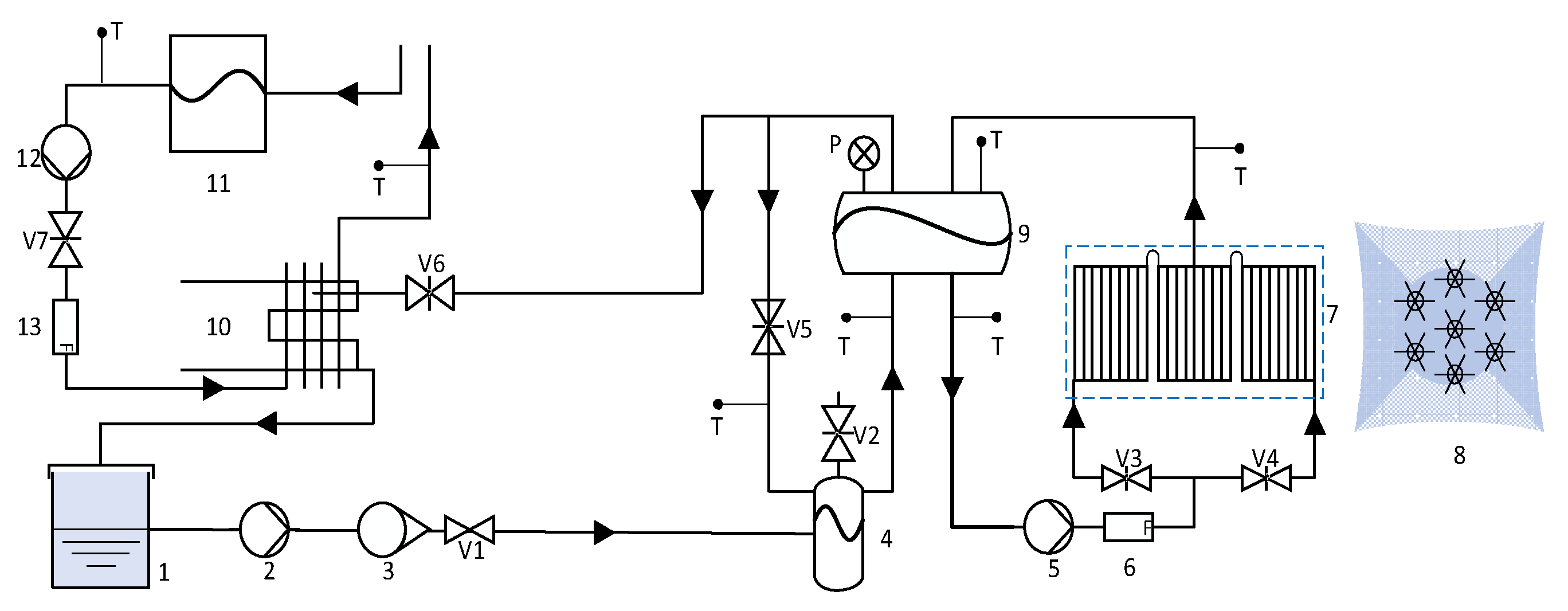
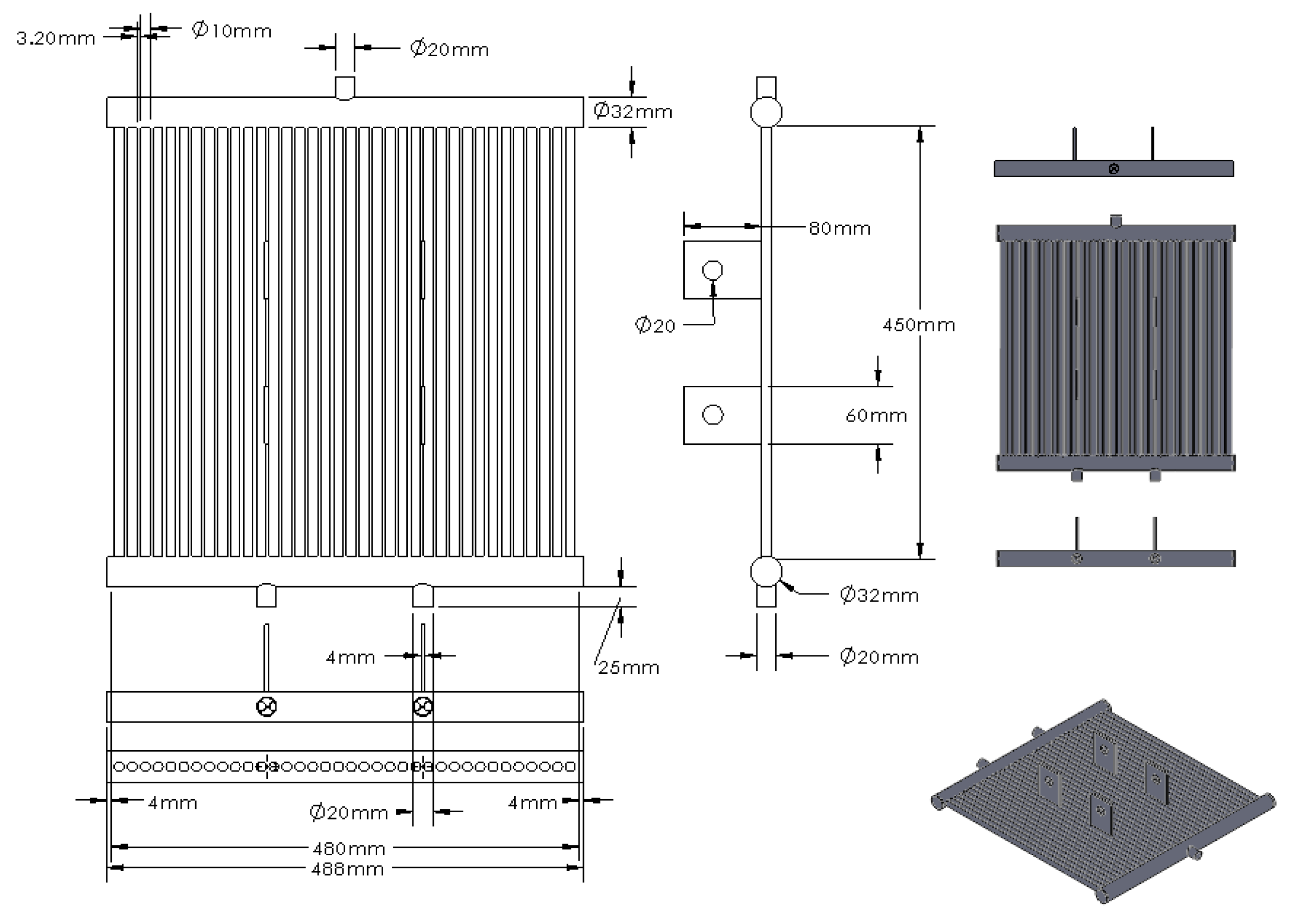

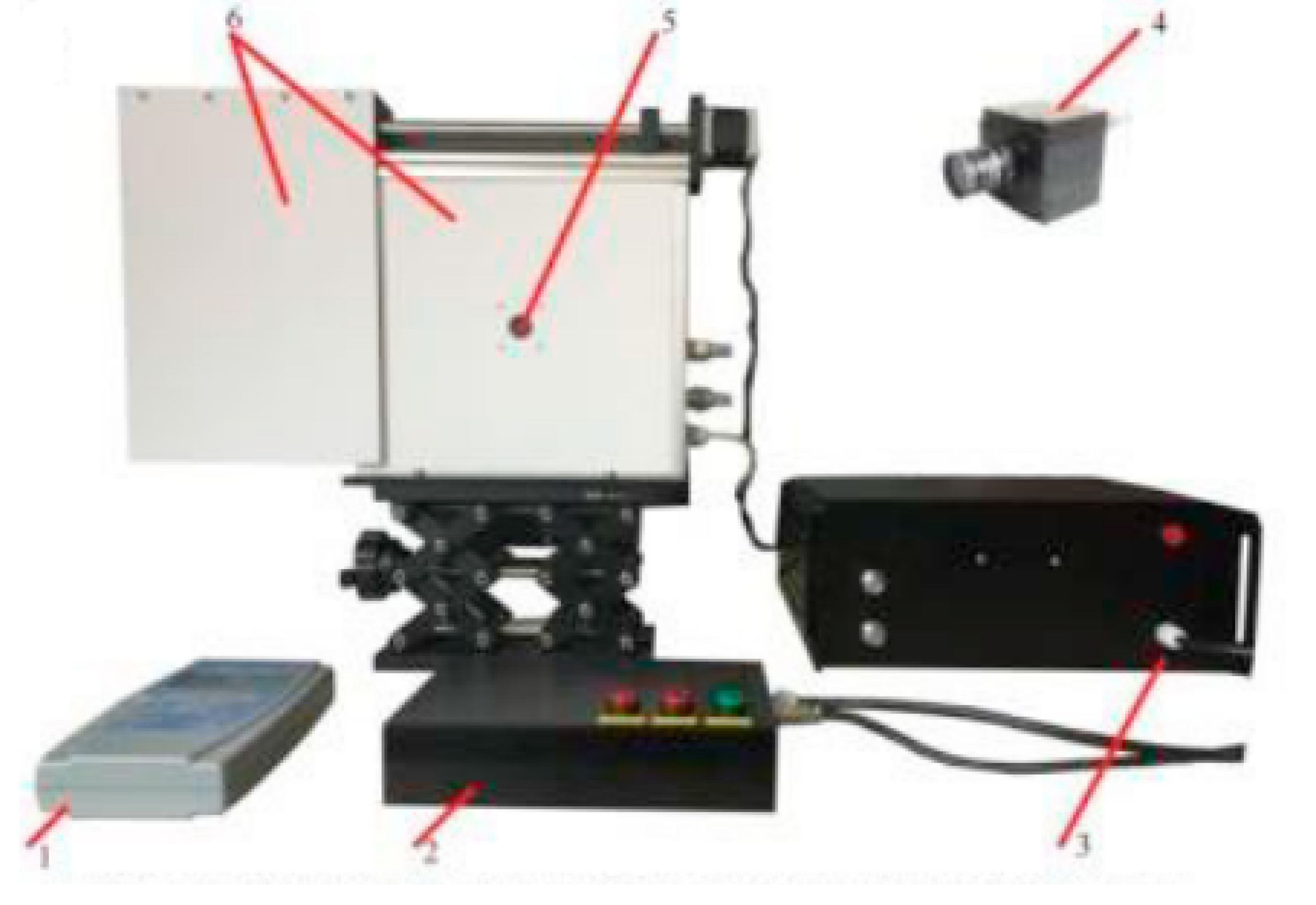


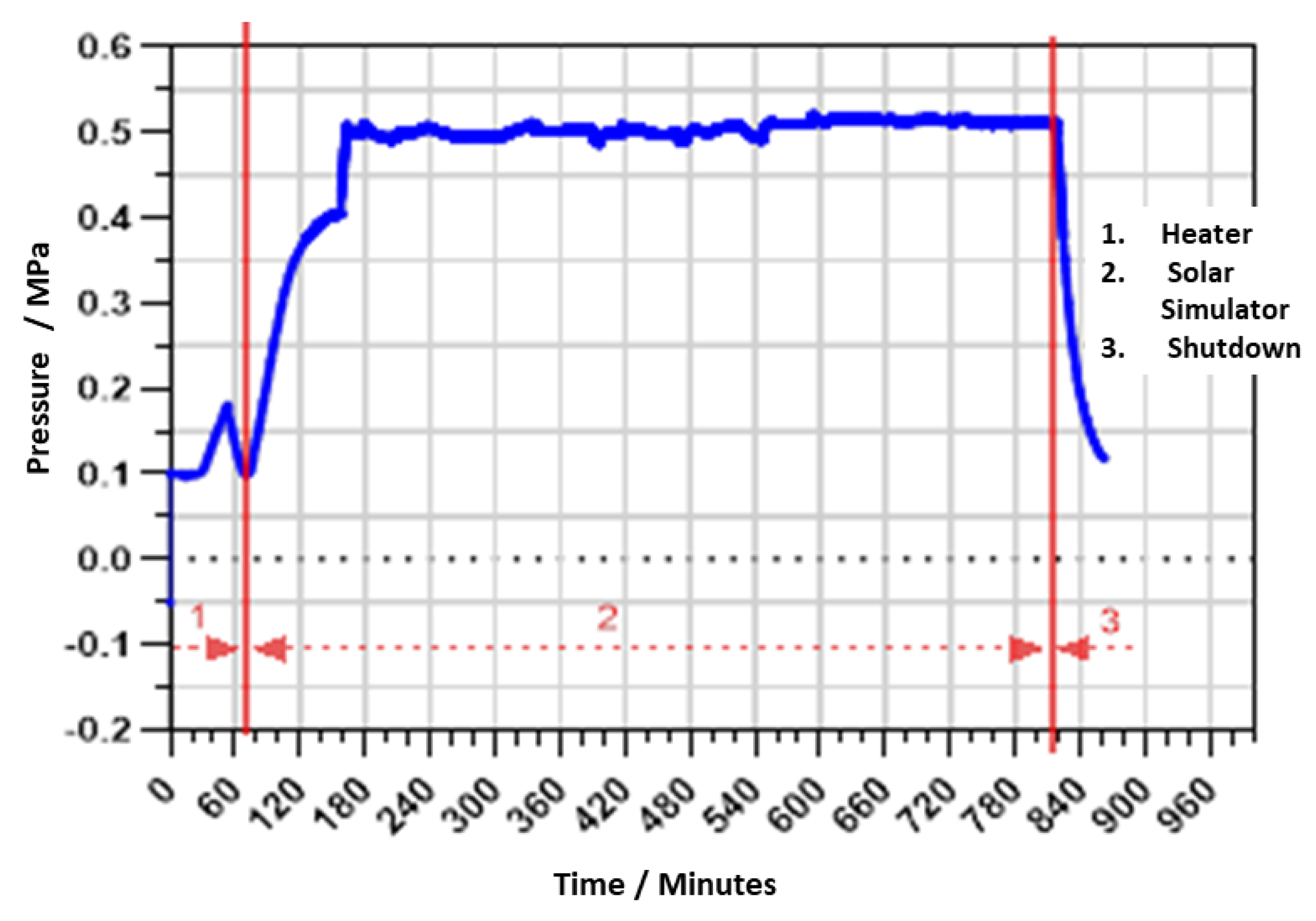
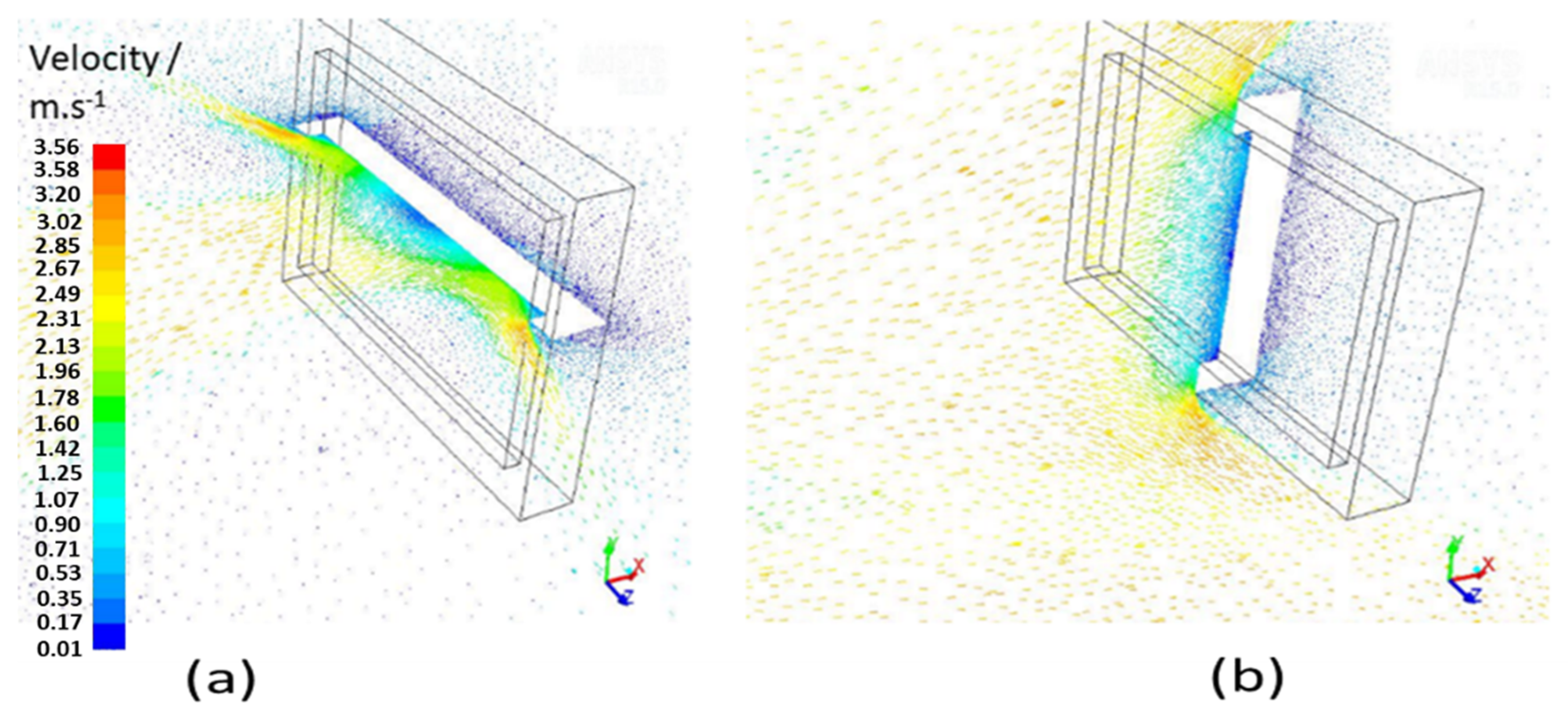

| No. | Item | Function |
|---|---|---|
| 1 | Feed-water tank | Contains the feed water later sent to the receiver |
| 2 | Feed-water pump | Responsible for pumping water out of the feed water tank |
| 3 | Flowmeter | Glass-tube rotameter to measure the mass flow rate at the outlet of the feed-water pump |
| 4 | Deaerator | To dearate the water, i.e., removes oxygen, gas bubbles and other dissolved gases from the water. |
| 5 | Circulating Pump | pumps water through the receiver tubes |
| 6 | Flowmeter | Installed adjacent to the water circulating pump measures the reading at the outlet of the circulating pump. |
| 7 | External Receiver | The object of the study; responsible for transmitting energy from solar simulator to the HTF. |
| 8 | Solar Simulator | Toprovide the required thermal energy to the external receiver. |
| 9 | Steam Tank | and steam are separated in the steam tank |
| 10 | Condenser | Steam from the steam tank is cooled down in the steam condenser. The steam temperature decreases to the room temperature in the condenser |
| 11 | Cooling tower | It is responsible for water intake needed for the experiment operation |
| 12 | Cooling water pump | It pumps water out of the cooling water tank into the feed water tank |
| 13 | Cooling flow meter | Measures the water flow rate coming from the cooling water tank and flowing into the feed water tank |
| No. | Item | Function |
|---|---|---|
| 1 | Xenon Lamps | The main components of the solar simulator; are responsible for the producing desired heat flux at the surface of the external receiver tubes. As can be inferred from the picture, there is a total of seven xenon lamps |
| 2 | Trigger | The cooling system consisting of fans to avoid overheating is also located in this portion |
| 3 | Electric supply button | The Electric supply switch controls the amount of power for each lamp. The power can be controlled as required. |
| 4 | Power switch | The main power switch for the controller for each panel. Each lamp has its panel showing values for current and voltage via the installed digital ammeter and voltmeter |
| 5 | Xenon Lamp On/Off switch | A simple on/off switch for each of the lamps |
| No. | Item | Function |
|---|---|---|
| 1 | Data logger | For data acquisition |
| 2 | Target Controller | The moving lambert target is moved and controlled via this target-controlled to achieve the flux at the desired location for measurement |
| 3 | Cooling system | To avoid the excessive heating of the equipment that may result in any sort of burning/damage to the equipment |
| 4 | CCD Camera | The image for the heat flux obtained onto the target is captured to the camera installed at the upper part of the specific xenon lamp. The capture has a limited view and captures within a specific angle. |
| 5 | Heat flux sensor | The sensor is attached at the back of the target to capture the heat flux distribution onto the target |
| 6 | The lambert target | The heat flux distribution is obtained to this lambert target. The image captured via a camera, of the flux distribution at the surface of the lambert target, is shown later in Figure 5. |
| Parameters and Conditions | Configuration/Settings Implied |
|---|---|
| Solver | Pressure-based solver in steady-state flow with respect to time |
| Gradient | Least Square Cell-based methodology |
| Algorithm | The Semi-implicit Method for the Pressure Linked Equation (SIMPLE) |
| Spatial Discretization settings | Second order-upwind scheme for momentum as well as the energy equations, whereas for the turbulent dissipation rate and turbulent kinetic equation the first-order scheme was selected |
| Convergence Criteria | The first-order scheme was chosen for velocity, κ and ε, and 10−6 for Energy |
Publisher’s Note: MDPI stays neutral with regard to jurisdictional claims in published maps and institutional affiliations. |
© 2022 by the authors. Licensee MDPI, Basel, Switzerland. This article is an open access article distributed under the terms and conditions of the Creative Commons Attribution (CC BY) license (https://creativecommons.org/licenses/by/4.0/).
Share and Cite
Fang, J.; Qaisrani, M.A.; Tu, N.; Wei, J.; Wan, Z.; Jin, Y.; Khalid, M.; Ahmed, N. Experiment and Numerical Analysis of Thermal Performance of a Billboard External Receiver. Energies 2022, 15, 2188. https://doi.org/10.3390/en15062188
Fang J, Qaisrani MA, Tu N, Wei J, Wan Z, Jin Y, Khalid M, Ahmed N. Experiment and Numerical Analysis of Thermal Performance of a Billboard External Receiver. Energies. 2022; 15(6):2188. https://doi.org/10.3390/en15062188
Chicago/Turabian StyleFang, Jiabin, Mumtaz A. Qaisrani, Nan Tu, Jinjia Wei, Zhenjie Wan, Yabin Jin, Muhammad Khalid, and Naveed Ahmed. 2022. "Experiment and Numerical Analysis of Thermal Performance of a Billboard External Receiver" Energies 15, no. 6: 2188. https://doi.org/10.3390/en15062188
APA StyleFang, J., Qaisrani, M. A., Tu, N., Wei, J., Wan, Z., Jin, Y., Khalid, M., & Ahmed, N. (2022). Experiment and Numerical Analysis of Thermal Performance of a Billboard External Receiver. Energies, 15(6), 2188. https://doi.org/10.3390/en15062188







